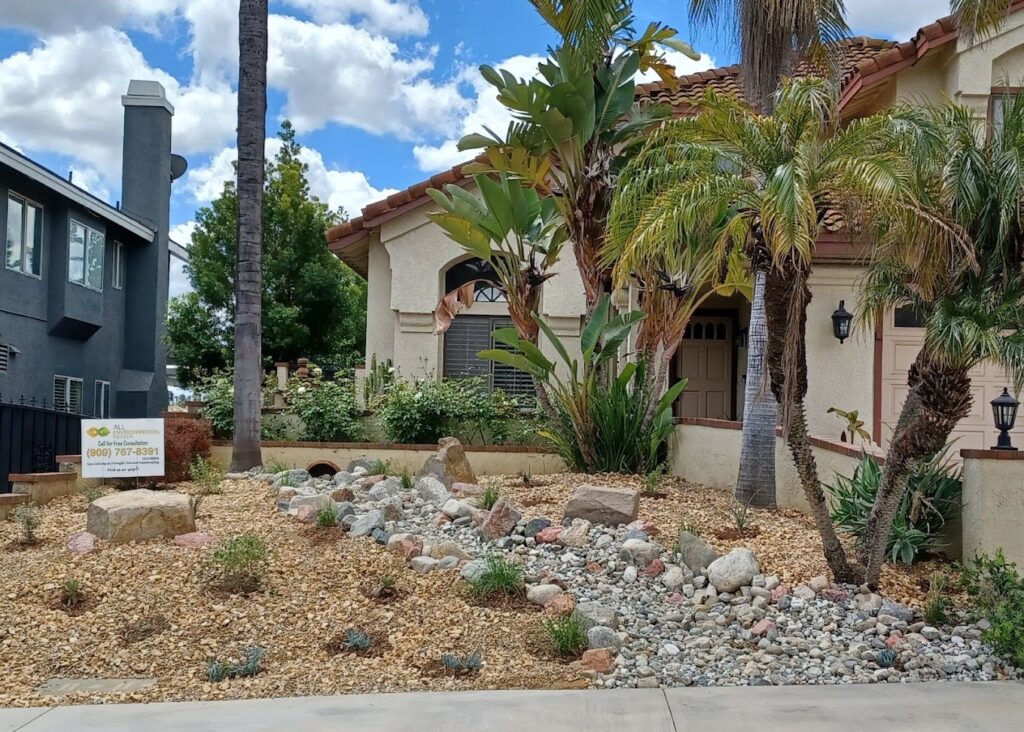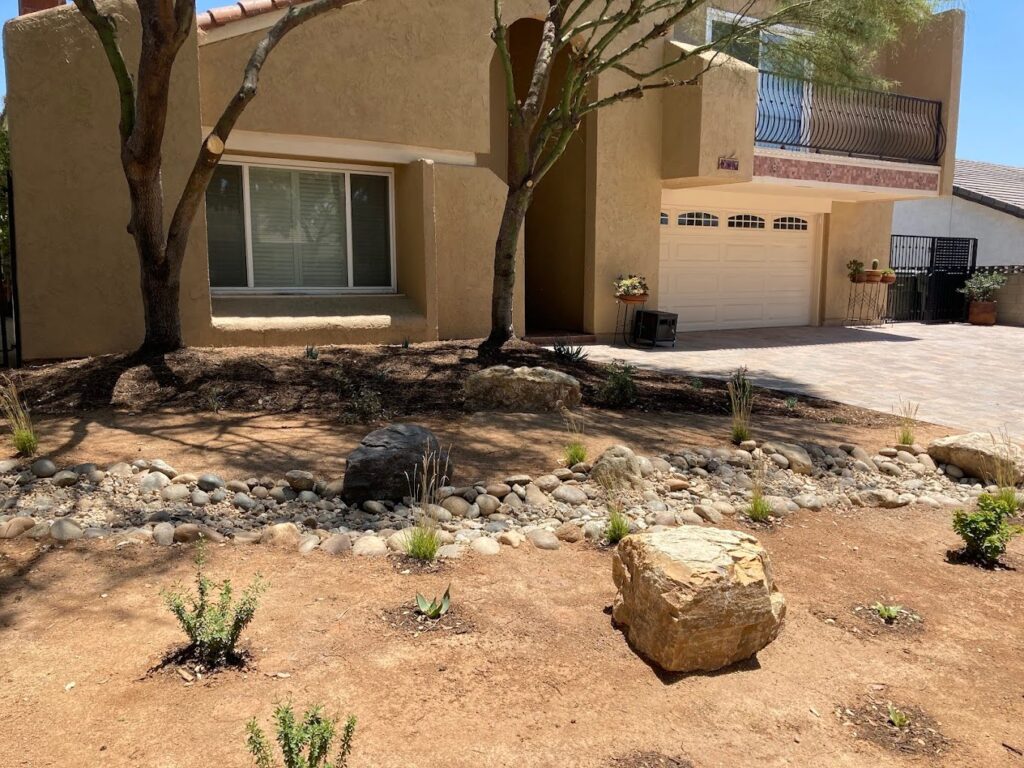
Across many regions, especially those affected by drought, homeowners and communities are rethinking traditional lawns. Water restrictions, environmental concerns, and the desire for sustainable landscaping have all contributed to a growing interest in alternatives. Two of the most discussed approaches are turf removal and xeriscaping. While both aim to reduce water usage and maintenance demands, they differ in scope, design, and long-term impact. Understanding the distinctions will help you choose the right path for your landscape.
What Is Turf Removal?
Turf removal refers to the process of taking out a traditional grass lawn and replacing it with something else. In some cases, people replace turf with drought-tolerant ground covers, mulch, gravel, or artificial turf. Others may leave the space bare temporarily before redesigning it. The main motivation behind turf removal is water conservation. Grass lawns, especially cool-season varieties, require large amounts of water to stay green and healthy. Removing turf drastically reduces water usage and often qualifies homeowners for state or municipal rebate programs.
Turf removal can be as simple as digging out the grass or as complex as a full renovation of the yard. Mechanical removal, chemical herbicides, or sheet mulching methods are commonly used. Once the turf is gone, homeowners are left with a blank canvas and must decide what to install next. Some choose low-maintenance ground covers like clover, while others opt for gravel pathways, decorative stones, or raised garden beds.
What Is Xeriscaping?
Xeriscaping is a landscaping philosophy that emphasizes water efficiency through careful plant selection and design. The word comes from the Greek “xeros,” meaning dry. It does not mean eliminating plants altogether. Instead, xeriscaping focuses on using native and drought-resistant plants that thrive in the local climate with minimal irrigation.
A xeriscaped yard might include succulents, desert grasses, shrubs, wildflowers, and trees that naturally withstand dry conditions. Soil amendments, mulching, and efficient irrigation methods like drip systems are also part of the approach. The goal is not only to conserve water but also to create a landscape that is sustainable, low-maintenance, and visually appealing.
Xeriscaping often incorporates hardscaping elements such as stone pathways, decorative gravel, or boulders, but unlike simple turf removal, it is more intentional and design-driven. A well-executed xeriscape looks cohesive and natural rather than barren.
Comparing Water Savings
Both turf removal and xeriscaping reduce water consumption, but xeriscaping typically provides greater long-term benefits. Simply removing turf cuts out the need to water grass, which is significant in arid climates. However, leaving the space barren or covering it with gravel alone can create heat islands, reduce biodiversity, and limit aesthetic appeal.
Xeriscaping, by contrast, offers a sustainable system. Once established, native plants require little to no supplemental water. They work with the natural rainfall patterns of the area, meaning irrigation is only needed in prolonged droughts. In addition, mulching and strategic planting help retain soil moisture. This layered approach saves water while supporting a healthier ecosystem.
Cost Considerations
The cost of turf removal depends on the method chosen and the size of the lawn. DIY turf removal using sheet mulching or digging may be inexpensive but labor-intensive. Hiring professionals for mechanical or chemical removal can cost more upfront. Rebates from local water districts often offset these expenses, making turf removal a financially attractive option for many homeowners.
Xeriscaping usually requires a larger upfront investment. Designing a cohesive xeriscape may involve hiring a landscape designer, purchasing native plants, installing drip irrigation, and adding decorative hardscaping. However, the return on investment is long-term. Lower water bills, reduced need for fertilizers or pesticides, and less frequent maintenance often make xeriscaping more cost-effective over time compared to the cycle of lawn care.
Aesthetic Differences
Turf removal without a clear plan can leave a yard looking stark or unfinished. A bare yard covered in gravel may reduce maintenance but can lack visual interest. Some homeowners opt for artificial turf, which provides a green appearance without water requirements, but it does not offer the ecological benefits of natural landscaping.
Xeriscaping tends to offer more variety and beauty. With the right plant selection, a xeriscape can bloom with color, texture, and seasonal change. Pollinator-friendly plants attract bees, butterflies, and birds, turning a once high-maintenance lawn into a thriving habitat. Rock features, ornamental grasses, and native wildflowers can create a unique, regionally inspired yard that stands out in the neighborhood.

Environmental Impact
Both turf removal and xeriscaping reduce water consumption, but their environmental impacts differ. Removing turf without replanting can reduce soil health over time. Exposed soil is vulnerable to erosion, and gravel-only yards can increase ground heat, which negatively affects local microclimates. Artificial turf reduces water usage but comes with its own set of environmental concerns, including heat retention and plastic waste.
Xeriscaping contributes positively to the environment when done thoughtfully. Native plants support local ecosystems by providing food and shelter for wildlife. Improved soil health, better water infiltration, and reduced reliance on chemicals all benefit the broader environment. In many ways, xeriscaping not only conserves resources but also restores balance to local ecosystems.
Maintenance Requirements
Traditional lawns require regular mowing, fertilizing, and watering. Removing turf eliminates many of these chores, but what comes next matters. Gravel or artificial turf requires occasional cleaning, while ground covers may need seasonal trimming. Overall, turf removal can reduce maintenance but does not always eliminate it.
Xeriscaping is designed to be low-maintenance rather than maintenance-free. Native plants require less water and care, but they still need occasional pruning, mulching, and seasonal adjustments. Drip irrigation systems may need to be monitored or repaired. However, compared to mowing and fertilizing a lawn every week, xeriscaping is significantly less labor-intensive once established.
Suitability by Climate
Climate plays a major role in determining which approach is best. In hot, dry regions, turf removal is often encouraged through water district programs, but leaving bare gravel yards can intensify the urban heat effect. Xeriscaping, with its combination of drought-tolerant plants and thoughtful design, is generally better suited to these regions.
In more temperate climates, turf removal may be enough to reduce water consumption without sacrificing comfort. However, xeriscaping can still be adapted to include regionally appropriate plants, ensuring water efficiency while maintaining visual appeal.
Making the Right Choice
If you are deciding between turf removal and xeriscaping, think about your priorities. If your primary concern is reducing water bills quickly and inexpensively, turf removal may be sufficient. It provides immediate savings and opens the door to future landscape redesign.
If you are looking for a long-term solution that is sustainable, attractive, and environmentally beneficial, xeriscaping is often the better choice. It requires more planning and investment upfront but pays off in beauty, biodiversity, and ongoing savings. Many homeowners even combine the two approaches by first removing turf and then transforming the space into a xeriscape over time.
Conclusion
Turf removal and xeriscaping both respond to the challenges of water scarcity and the growing need for sustainable landscaping. Turf removal provides an immediate way to conserve water and cut down on lawn maintenance, but it can sometimes result in a barren or less appealing yard. Xeriscaping goes further by creating a thoughtful, plant-centered design that is low-maintenance, environmentally supportive, and visually dynamic.
The choice depends on your goals, budget, and climate. For some, turf removal is a first step, while xeriscaping becomes the ultimate destination. By understanding the differences and potential benefits of each, you can make a decision that not only serves your household but also contributes to a healthier and more sustainable community.
If you’re looking for turf replacement or xeriscaping get in touch with us today.
